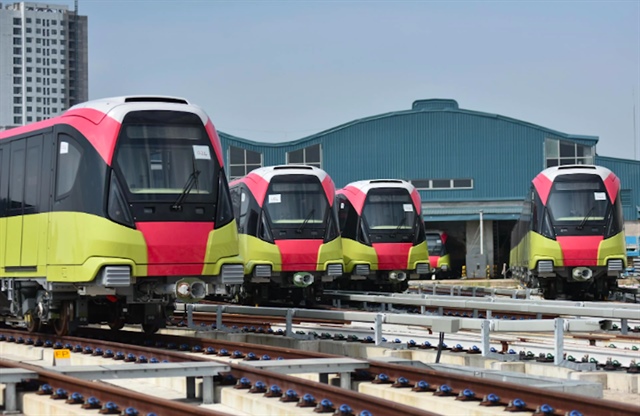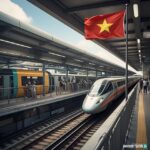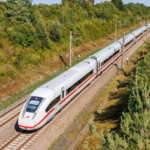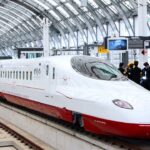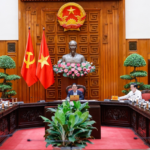The Ministry of Construction is seeking feedback on a draft decree that outlines criteria for selecting organizations and enterprises to provide services and goods for the railway industry.
The draft proposes that enterprises selected to manufacture high-speed railway components such as rails, switches, and connecting accessories must meet certain conditions.
Specifically, enterprises chosen to produce railway equipment and components should have advanced manufacturing solutions and processes, modern technology capabilities, and the ability to customize and adapt to the specific requirements of the assigning agency or organization.
Additionally, enterprises must commit to adhering to technical standards and regulations as stipulated by the assigning agency or organization. They should also have a quality control process in place and obtain conformity and compliance certifications from accredited organizations.
Enterprises need a clear direction
Based on the experiences of countries with developed railway industries, Prof. Dr. Nguyen Chi Sang, Chairman of the Vietnam Mechanical Enterprise Association, suggests that to build a modern railway system, infrastructure investment must go hand in hand with the development of the domestic railway industry.
Therefore, he emphasizes the need for a comprehensive strategy that leverages opportunities while enhancing the capabilities of enterprises to gradually master the technology.
“What enterprises require is not financial support from the state but a clear direction to ensure sustainable investment. With a concrete roadmap, enterprises are willing to invest in developing their production capabilities and even shift their investment models to meet market demands,” Prof. Dr. Sang added.
He also supports the policy of assigning tasks to a number of key enterprises to take on a leading role in the railway industry. These enterprises can master and provide critical components such as rail production, locomotives, coaches, and tunneling technology.
In reality, several domestic enterprises have experience in repairing, building new locomotives and coaches, and designing and constructing railway infrastructure. With appropriate preparation, these enterprises can participate in consulting, designing, project management, equipment manufacturing, and building information and signaling systems, expressed Prof. Dr. Nguyen Chi Sang.
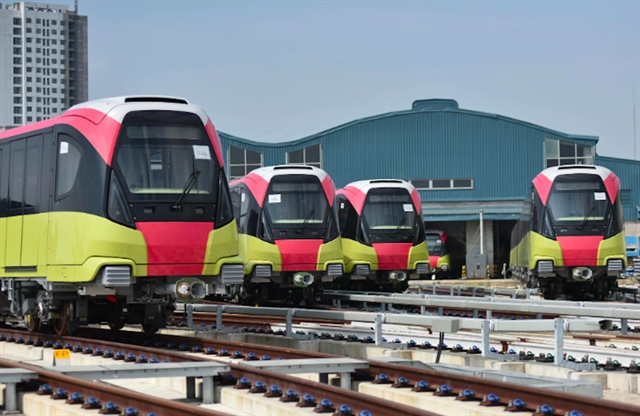
Metro Nhon – Hanoi Station. Photo: MRB |
From another perspective, Prof. Dr. Hoang Van Cuong, National Assembly Deputy of Hanoi, and former Vice Rector of the University of Economics and Business, highlights that countries aiming to localize or protect their domestic production often establish technical standards for the industry, ensuring that local enterprises can meet the requirements.
“Vietnam should also set technical standards that investors, both domestic and foreign, must adhere to if they want to participate in railway projects,” Prof. Dr. Cuong suggested.
Within this framework, enterprises assigned or taking the lead in projects must seek out enterprises capable of meeting the stipulated standards and conditions. This will foster linkages among enterprises, forming an ecosystem for the railway industry and driving the development of related sectors such as steel and mechanics, Prof. Dr. Hoang Van Cuong shared.
He believes that by doing so, we can ensure a compelling market for enterprises, including domestic investors, to develop and create overall and far-reaching benefits. With multiple investors willing to participate, the state will have the opportunity to consider and choose capable and competent investors to lead the projects.
|
According to the Ministry of Construction, Vietnam’s railway industry remains fragmented, with most machinery and equipment outdated and piecemeal. Investments in technology upgrades and synchronized equipment have been lacking. Moreover, the means of production, equipment, supplies, and components for the railway sector are still largely imported. As we prepare for the North-South high-speed railway and other significant national and local metro projects, a substantial market is emerging. The estimated market demand for coaches alone is valued at approximately 16 billion USD, while the information and signaling systems are worth around 10 billion USD. This presents a promising prospect for the development of Vietnam’s domestic railway industry. The Ministry of Construction stated that, based on assessments by experts and enterprises, with appropriate policies in place, we can achieve 50-60% localization of machinery for locomotives and coaches and information and signaling systems. Moreover, with technology transfer, we can take charge of maintenance and upkeep. |
N. Huyen
– 05:00 30/05/2025
What the Experts Say About VinSpeed’s Loan Proposal for the North-South High-Speed Railway Project
The proposal by VinSpeed to fund 80% of the North-South high-speed rail project through interest-free investment loans for 35 years has sparked much debate. From the perspective of public finance, infrastructure strategy, and long-term industrial development, experts argue that this approach warrants serious consideration.
Breaking: Another Industry Giant Proposes High-Speed Rail for North-South Corridor, Promising Completion in Just 7 Years
“With a strong commitment to national economic growth, this enterprise prioritizes collaboration and partnership with domestic businesses and corporations. By harnessing the capabilities of local enterprises, this organization ensures that projects and tasks are executed with a deep understanding of the domestic market, fostering a robust and resilient economy.”
High-Speed North-South Rail Project: Why is VinSpeed Willing to Take a Loss?
VinSpeed has proposed the development of a high-speed rail network connecting the North and South of the country, with a bold promise to expedite construction and accept the risk of financial losses to achieve a historic feat in Vietnam’s infrastructure landscape.
“Vietnam’s North-South High-Speed Rail: Catalyzing the Nation’s Industrial Renaissance”
High-speed rail networks in Japan, South Korea, and China have done more than just bridge geographical gaps and connect regions; they have catalyzed the formation of high-tech industries worth hundreds of billions of dollars. With the proposed North-South high-speed rail project, Vietnam stands at a “once-in-a-century” opportunity to forge a new industrial springboard for the nation on the threshold of its aspirational ascent.
“Handing Over the Resettlement Boundary of the Lao Cai – Hanoi – Hai Phong Railway Project in May 2025”
Prime Minister Pham Minh Chinh has instructed relevant ministries, sectors, and localities to expedite the completion of boundary handover and site clearance for the Lao Cai – Hanoi – Hai Phong railway project within May 2025. This directive aims to ensure that the construction of the project can commence simultaneously at five different points along the route on December 19, 2025.

